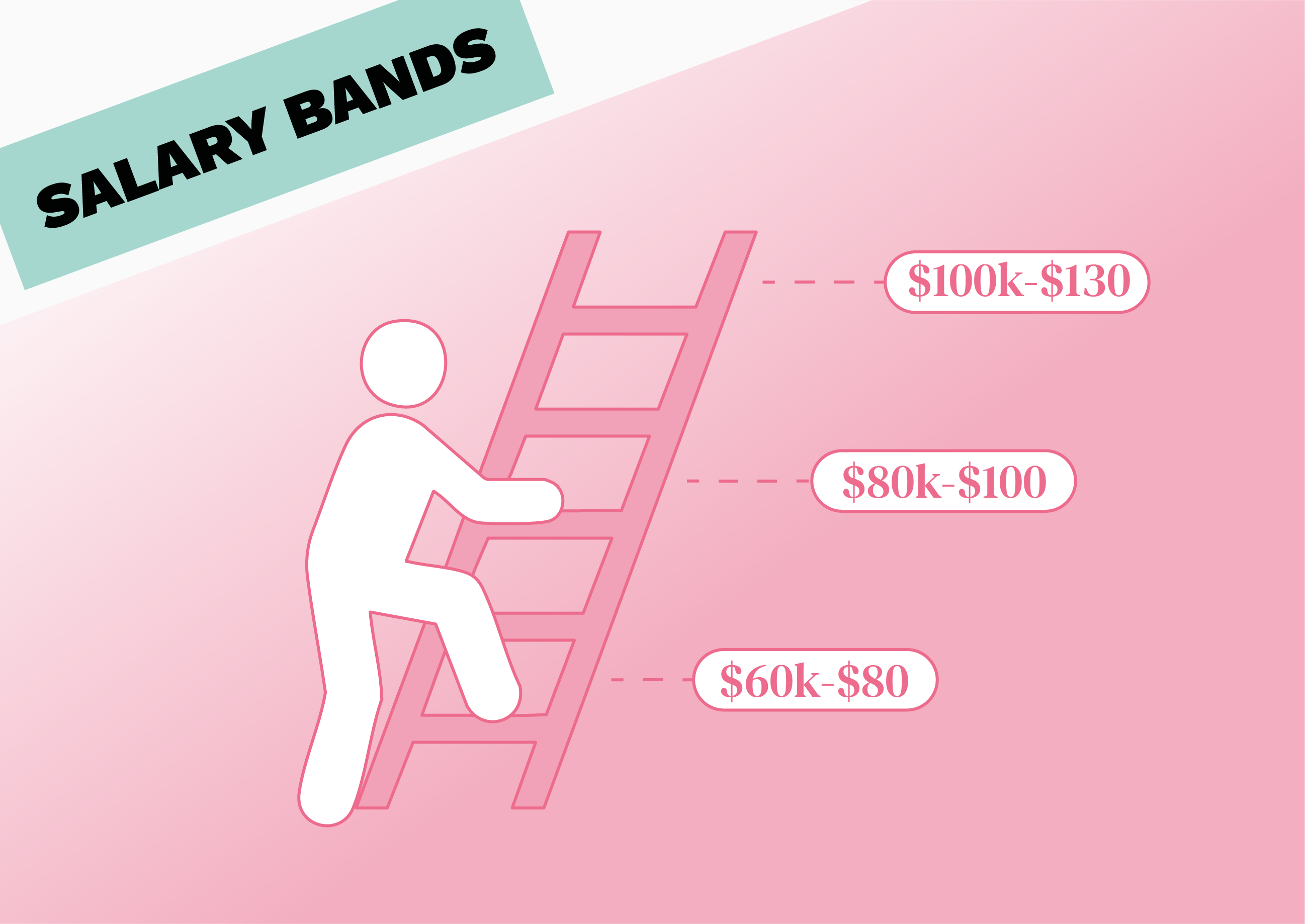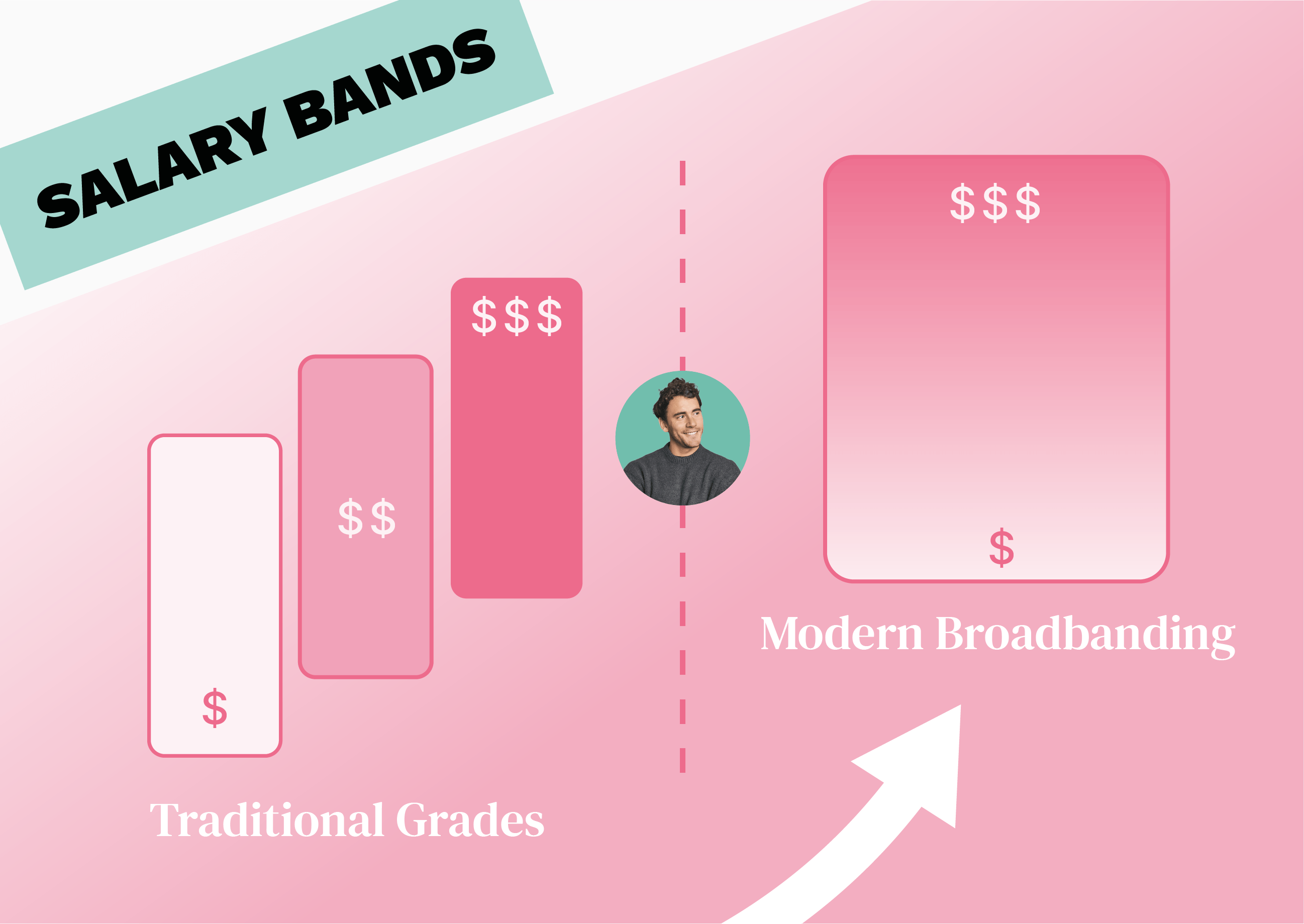How to improve employee retention and motivation: why salary bands are your secret weapon
Trends like ‘act your wage’ show just many employees don’t feel they’re appreciated or paid their true worth — with this hashtag collecting over 400 million views on TikTok alone. And when employees don’t feel valued, they’re far more likely to lose motivation or even leave their jobs entirely. Many employees also want to see clear development opportunities, with 59% of millennials saying this is a key factor for them.
Fail to offer these pathways for career growth, and your employees lose motivation and may start looking for another job elsewhere. Creating a compensation strategy that clearly outlines how your employees will earn more money as they develop new skills is a key way to encourage them to stay. For this strategy to work effectively, salary bands have an important role to play.
Defining your salary bands is vital, but so is communicating them effectively. Even once that’s achieved, it’s worth remembering that compensation isn’t the only factor that drives retention. Keep reading to discover how salary bands can help drive retention, but what else matters as well.
Why salary bands are so important
At Figures, we define salary bands as: How much a company is willing to pay for each job at a given level of execution.
You can read more in our full explainer but in a nutshell, salary bands can help attract, retain, and engage the top talent in addition to promoting transparency and making compensation decisions more effective and fair.
Putting salary bands in place now is also a great way to prepare for the upcoming EU Pay Transparency Directive, something that’s going to impact all companies operating in the EU.
Why employee retention is important
You’ve gone to all the trouble and expense of advertising a vacancy and secured the top talent — now the real work begins — retaining them! Linkedin’s latest Workplace Learning Report found that employee retention is a key concern for 93% of companies.
One reason retention is so important is the high cost of replacing an existing employee, estimated by Gallup to cost between one-half and two times their salary. Working to boost retention also brings other benefits including improving performance and productivity in addition to minimising disruption for other employees and the company as a whole.
How to improve employee retention
When an employee suggests they’re thinking of leaving, how do you react? If it’s with individual measures such as suggesting an off-the-cuff pay increase, that’s no longer good enough.
To improve retention long-term, and in a fair way for every single employee, a more holistic and proactive approach is required. As part of your overall compensation strategy, salary bands can be used to show your ongoing commitment to each employee’s development. These bands not only show new hires what they’ll be paid, but it also makes it easier for them to visualise how their career might develop within the company. This makes it easier to promote internal mobility, something that’s been shown to boost retention.
What drives employee retention? Some of the top strategies include:
- Competitive wages
- Encouraging internal mobility
- Rewarding performance
- Creating a career development plan
- Remote work
- Flexible working
- Promoting employee wellbeing
Implementing salary bands helps improve retention by allowing you to offer competitive salaries (based on market data) and show clear paths for internal mobility.
Best practices for using salary bands to improve employee retention
Knowing that salary bands are crucial for boosting employee retention — and successfully implementing this practice are two separate things. Take inspiration from these two companies who have been there and done that.
Planes
Digital product design company Planes wanted to review its salaries to check that both new hires and existing employees were being paid a fair wage. But this was difficult to achieve without access to benchmarking data. With wellbeing at the core of their people strategy, People Lead Sophie Aspden wanted to create a transparent salary structure with employees at its heart. Finding salary data that matched their structure as an agency was a challenge, but thanks to Figures, Sophie was able to find accurate, real-time benchmarking data for other agencies and consultancies.
This data helped Planes create a transparent salary structure alongside building out their pay review process. These changes ensure the company can make positive changes for their team that help boost retention, including regular pay rises, levelling, and making it easy for employees to visualise their progression.
Slimmer AI
Artificial Intelligence company Slimmer AI was looking for ways to promote fair pay while also improving transparency. During compensation discussions, it was apparent that employees often knew more about what people in similar roles at other companies were being paid than the HR department did.
People Lead Elsa Berg wanted to create a new compensation policy that showed the team at Slimmer AI how they could progress at the company, but found she was spending hours trawling the internet for pay data. Enter Figures. Thanks to our real-time benchmarking data, Elsa was able to find accurate data that matched Slimmer AI’s market position, enabling her to quickly confirm their salary bands were on track. Now, it’s easier for the HR team to show employees why their pay is fair and how their performance relates to pay, something that can help boost retention.
Increase transparency and boost retention with salary bands
If you’re ready to deploy salary bands as your new secret weapon, we’ve got good news — Figures Salary Bands is now LIVE.
Keep reading...
.avif)




